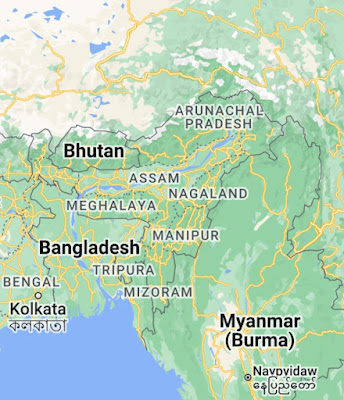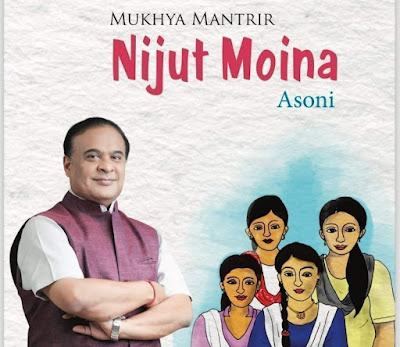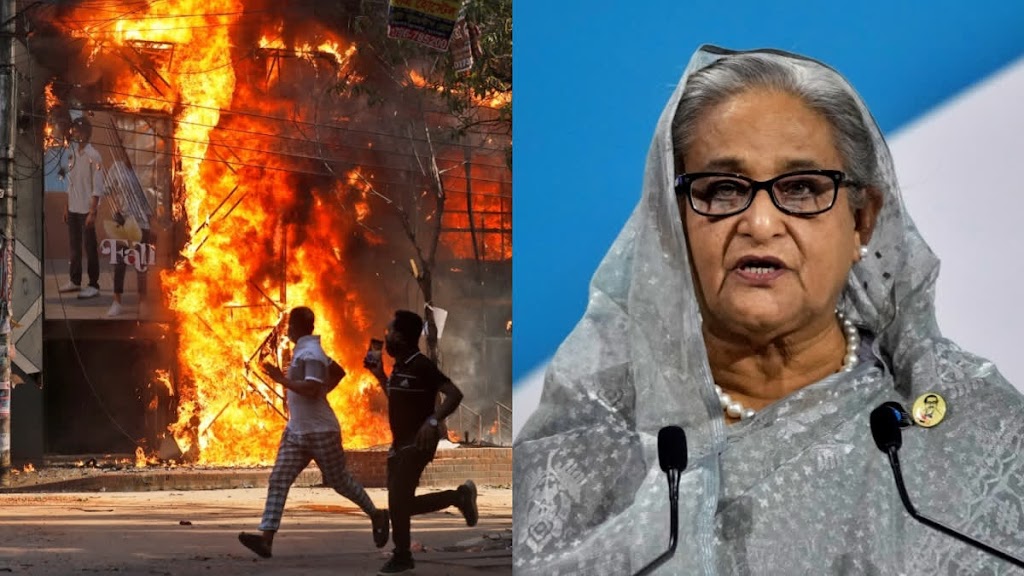About North-East India : An Introduction | North Eastern States at a Glance : (Seven Sisters of India)
In this article we have given you A BRIEF NOTE ON NORTH EAST STATES OF INDIA. So, read this article on about north-east india : an introduction. North eastern states at a glance : (seven sisters of india). To give you the best we are here with our special article regarding the Seven Sister States of North-East India.
Seven Sisters of India
A BRIEF NOTE ON NORTH EAST STATES OF INDIA
Arunachal Pradesh, Assam, Manipur, Meghalaya, Mizoram, Nagaland, Tripura and Sikkim are eight states located in the North East of the country and command special importance in India, not only because of their location but also their cultural and historical uniqueness.
The landscape, the range of communities and geographical and ecological diversity make these states quite different from other parts of the country. They are known as eight siblings and referred to as ‘eight sisters’ or ‘seven sisters and one brother’. These states cover an area of 2,63,179 sq. km, approximately eight per cent of the country’s total geographical area and house around 3.76 per cent of the total population the country. Around 98 per cent of the boundary of these states has international borders. Surrounded by hills and beautiful rivers, these states fall in the category of eastern Himalayan ranges and Patkai-Naga hills along with Brahmaputra-Barak river systems and valley plains.
The hills and basins are a mixture of mountain ranges, plateaus, low hills and valleys. Rich in natural resources and flora and fauna, the region is a gateway to east and South-East Asia. The states have distinct cultures and multiple ethnic groups and are a fine example of unity in diversity. The variety of ethnic groups, languages and religions reflect the multi-cultural character of the states.
The region houses over 200 of the 635 tribal groups in the country, speaking a variety of Tibeto-Burman languages and dialects. States like, Arunachal Pradesh, Meghalaya, Mizoram and Nagaland are predominantly inhabited by tribals with a certain degree of diversity among the tribes. States like, Assam, Manipur, Tripura and Sikkim are inhabited by people of various religious denominations like, Hindus, Christians and Muslims and a combination of local tribes and communities.
The region has remained isolated from the rest of the country because of its location and terrain and has failed to secure equal benefits in the process of development. This has resulted into social-political disturbances and unrest for a few years. While the region has a lower level of industrial and economic development, it has abundant forest resources.
Petroleum and tea are two significant resources harnessed in the region. At the same time, agriculture, horticulture and handloom continue to be the main activities of these states. Arunachal Pradesh is the largest among the northeastern states in India. Ethnic and linguistic heterogeneity is a noticeable feature of the state. Tawang, having one of the largest and the oldest Buddhist monasteries in India, is located here.
Assam, a land of scenic beauty, with rivers like Brahmaputra and Barak, is the second largest but most populous and developed state in the North East. Assam houses two of the UNESCO World Heritage sites — the Kaziranga National Park and the Manas Wildlife Sanctuary.
The Assam state produces some of the finest tea in the world. It is also known for Kamakhya temple, one of the most revered Shakti-Peeth in India, and Srimanta Sankardeva who was one of the most versatile saints in the Indian history. Manipur is a beautiful state located on the eastern boundary of the North East, bordering Myanmar, and having a chequered history of culturally advanced kingdoms.
Reportedly, the game of ‘Sagol Kangjei’ (Polo) originated in Manipur. ‘Ras-Lila’, a dance form of the state, is recognised as one of the classical dance forms of India. In recent times, the state has been known for the contribution and role of its women in social reforms and sports.
The INA Memorial, Loktak Lake and Ima Keithel are some of the major places of interest in the state. Meghalaya, with Shillong as its capital, is a plateau with different elevations and has been known as the ‘Scotland of the East’.
Mawsynram, in the southern slope of Khasi hills of the state receives the highest rainfall in world. The state has a matrilineal system, which is unique in many ways. Meghalaya has some of the best schools and colleges in the region and the literacy rate is very high.
Mizoram is a hilly state in the North East and is characterised by the presence of homogenous tribal population. With Lushai as their common language, almost all Mizos follow Christianity. The state is credited with having emerged as a peaceful and stable polity and has shown a high degree of social and economic development in recent years.
Nagaland, a predominantly tribal state on the eastern border, is mostly hilly and enjoys the reputation of being a home to Nagas, a brave group of people in the region. Its capital Kohima was an important battlefield during the World War II, when the Japanese invaded British India. The Kohima War Cemetery, made in the memory of soldiers killed in the Battle of Kohima in 1944, is a major tourist attraction.
Tripura, bordering Bangladesh, has significant cultural linkages with Bengal and tribal regions of Assam and Mizoram. The Tripuris are the largest tribal community in the state and constitute the core of its society. A predominantly hilly region, the state has a warm and humid tropical climate and is an agriculture-based economy. Noted musician S. D. Burman and gymnast Dipa Karmakar have brought fame to the state and the country.
Sikkim, a small bowl-like state, with as its capital Gangtok, has a hilly terrain and is accessible from the plains of Bengal. It is distinguished by its Himalayan flora and fauna and Buddhist monasteries. The state produces Temi tea, a unique variety of tea, and is a major tourist attraction for visitors because of its Himalayan location. Diverse ethnic origin of people inhabiting the eight states of the North East make it truly a wonderful region.
Though the legends, myths, folklore and customs of the area are woven with those of the neighbouring regions of the country, there has been a rapid change in these states with the modernisation of economy and expansion of education. These states present a picture of modernisation in a relatively difficult and disadvantaged region and deserve to be recognised for their historical and cultural uniqueness, successes and achievements in a complex and diverse society.
It is often noticed that there is a general lack of awareness about these states of North East India among young children, particularly those living in other parts of the country. This hinders the inclusion of the children and people of the region in mainstream of India and integration with the country. It is hoped that the book will be helpful in increasing awareness and understanding about these states among the children of India.
Now World_Polity is on every platform to give you each & every update.
• Subscribe our Youtube channel
• Join our Facebook Page
• Join our telegram Channel
Recent Most Searches :
• Origin of the Tribes & Types of Tribes in North East India
• Rise and Consolidation of British Power in Khasi Hills
Hello if you like the article on A BRIEF NOTE ON NORTH EAST STATES OF INDIA FOR APSC, do comment & show your support by sharing it to the other aspirants and if there is any query you are welcome to ask.



